
About the
Shaheed Fountain
Let us build a work of art so unique, it will capture the imagination of the world
The Sikh Community in Houston Is building one of the most UNUSUAL fountains in the worlD, To raise awareness of their religion
Sikhs are known for the striking architecture of their temples. The Golden Temple, the holiest of Sikh shrines, uses its architecture to express the ideals of Sikh philosophy (read more about this on the SIKH page).
Similarly, every feature of our Shaheed Sikh Fountain has a meaning behind it that illustrates various aspects of Sikh philosophy.
MISSION: The history of Sikhs is a history of persecution. The mission of this Shaheed Fountain is to dedicate this unique on-of-a-kind artwork to the many martyrs who selflessly gave their lives to uphold the values of Sikhism and the Guruji’s teachings.
The Mughal emperors in India, part of a ruling minority of Muslims, saw themselves as “the believers” battling the “unfaithful” Hindu majority of India. When they realized a brand new faith had taken hold in the Punjab region, they immediately outlawed the Sikh faith, and Sikh’s right to worship. They put a price on the head of every Sikh, hoping to suppress this new spiritual awakening.
Faced with these challenges, Sikh martyrs met death on the battlefield, and if captured, were subjected to cruel torture by the Mughals.
The Sikhs remember this persecution in their prayer called the “Ardas”. The first paragraph of our "Guru Ki Ardas" mentions the Ten Living Gurus by name and the Guru Granth Sahib Ji (our holy book), followed by the sacrifices made by our shaheeds (martyrs).
Placement of the fountain in the courtyard of the Sikh Temple.
The Middle section of “Ardas” mentions the countless, nameless martyrs. This Shaheed Fountain is dedicated to honoring the memory of those martyrs.
From Saints to Warriors: The Mughals imprisoned the fifth Guru of the Sikhs, Guru Arjan Dev Ji, and tortured him to death. The Sikhs had been consciously pacifist and non-violent till this time. They responded to the martyrdom of their fifth Guru by taking up arms and learning to defend themselves. Once armed, they defended not only Sikhs, but other Hindus too who were being persecuted. This is the time when the Sikhs started using the double sided sword as one of their holy symbols.
The Khanda Symbol: The double sided sword, over time, was mated with a circular “chakra,” and two matched curved swords (referred to as “Miri” and “Piri” by the Sixth Guru, representing worldly power that is guided by spiritual wisdom), to form the Khanda symbol that is displayed proudly by Sikhs all over the world. This Khanda symbol is the design inspiration behind the creation of the Shaheed Fountain.
FOUNTAIN’S FEATURES AND THEIR MEANING:
Remembering Sikh Philosophy of love and kindness all throughout the day: In the center of the fountain a traditional double sided sword called the Khanda rises up towards the heavens. It is 24 feet high, representing 24 hours in each day. It reminds us to keep the teachings of Sikhism in our mind day and night, and to inform each action we take during our day with the values we have been taught to live by, namely honest work (“Kirat Karna”), and serving others (“Wand Ke Chhakna”).
Remembering our Gurus: Radiating out from the center, around the central Khanda, are eleven curved swords. These represent the ten living Gurus of Sikhism, and their holy book called the “Granth Sahib” which is revered as the eleventh Guru.
“Lord, everything is yours”: Each of these radiating swords is 13 feet in length. The word for 13 in Punjabi, the language of the Sikhs, is “Tera”. In Punjabi the word for “yours” also happens to be “Tera”. So this is a play on the sound of the word for 13. There is a story about Guru Nanak, the founding Guru of Sikhism, who would meditate on the Divine and chant, "Tera, Tera, Saab Kuch Tera", which translates to “yours, yours; Lord, everything is yours”. This aspect of the Khanda fountain harkens to Guru Nanak’s chant, reminding us to be generous with the material wealth we have been blessed with, and sharing it with others less fortunate than us.
Provide generously for the needy: Pouring out from the base of each radiating sword are streams of water. Water is nourishing. This is a reminder that Sikhs use their weapons only for the defence of the weak, never for offense. Sikhs use their strength to protect the downtrodden and nourish the needy.
Think before acting: Both the central sword and the radiating arms will rotate left to right, at varying speeds. This symbolises taking only “right” actions, and refraining from actions that are amoral.
Practice self reflection: The swords are made from mirrored Stainless Steel. It is a reminder that self reflection and meditation are central practises in Sikhism.
ADDITIONAL FEATURES:
In our fountain the central double edged sword is built as an outline, with connecting shapes to provide structural strength. There are two kirpans (swords) that represent "Miri and Piri", to remind us that worldly action should be informed by spiritual wisdom. A Khanda symbol is at the top left side. In the center area is a weapon of warriors called a Katar, and there is a Chakker towards the bottom right. All these elements help to stabilize the two sides of the central sword, while alluding to the traditional Khanda symbol.
The vertical steel Khanda structure will be installed as a centerpiece in a pool of water 34-36 feet in diameter. The pool will be 2.5 feet high with an infinity edge. This pool is designed like a Batta (bowl) which holds the Amrit (holy water) during the Sikh initiation ceremony called Amrit Sanskar. Special lighting features will be added to bring the fountain to life during the evening hours.
The edge of the infinity pool (circular 1 feet wide, with yellow/golden glitter tiles) will form the Chakkar part of our original Khanda symbol.
Next to the fountain two Stainless Steel Shields (Dhahls) will be installed. Each will be approximately 4.5 feet by 2.7 ft. The surface will be sandblasted to create the shape of our original Khanda (these have been completed and will be installed once the base is built). On this we will have Punjabi and English letters laser-cut and backlit, expressing our message of dedication to the martyrs.
Two Stainless Steel Shields (Dhahls) will be installed on either side of the fountain once the base is completed.
GALLERY
Many generous donors have already contributed funds to proceed with the construction of this one of a kind art sculpture that will raise awareness of Sikhism. Here are some photos showing the elements being fabricated and assembled. Please consider adding your heartfelt contribution to help us finish the project.
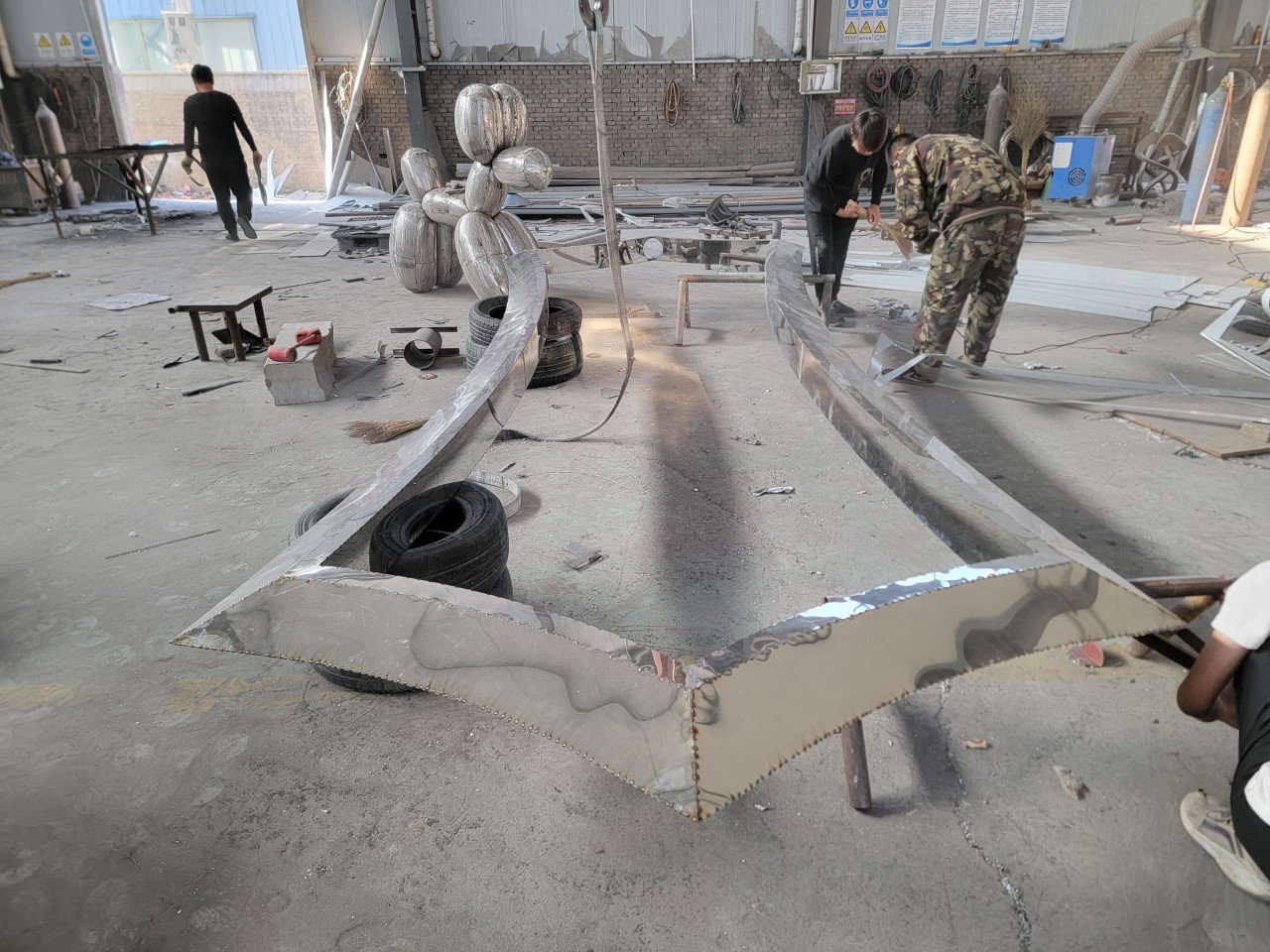
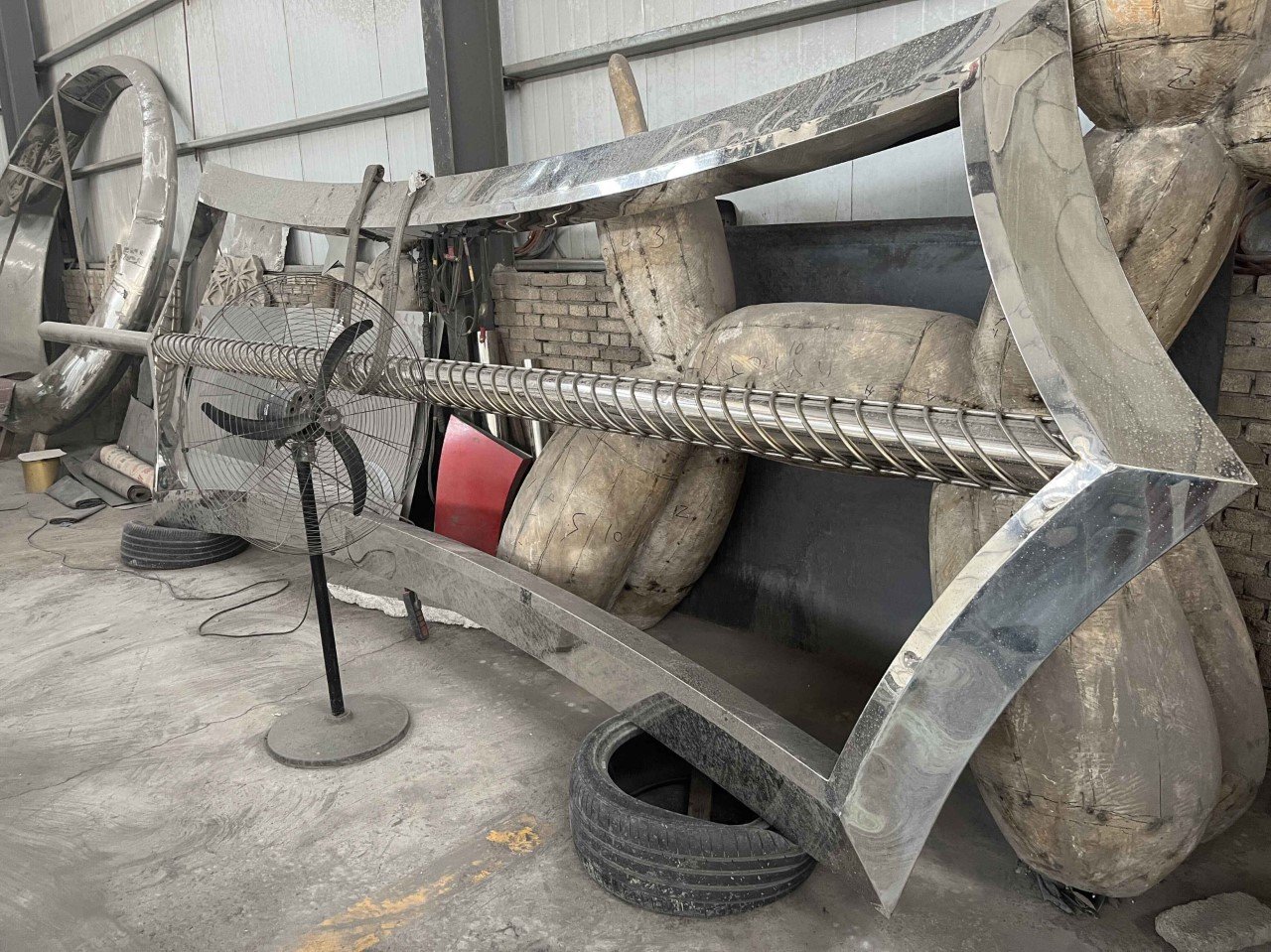
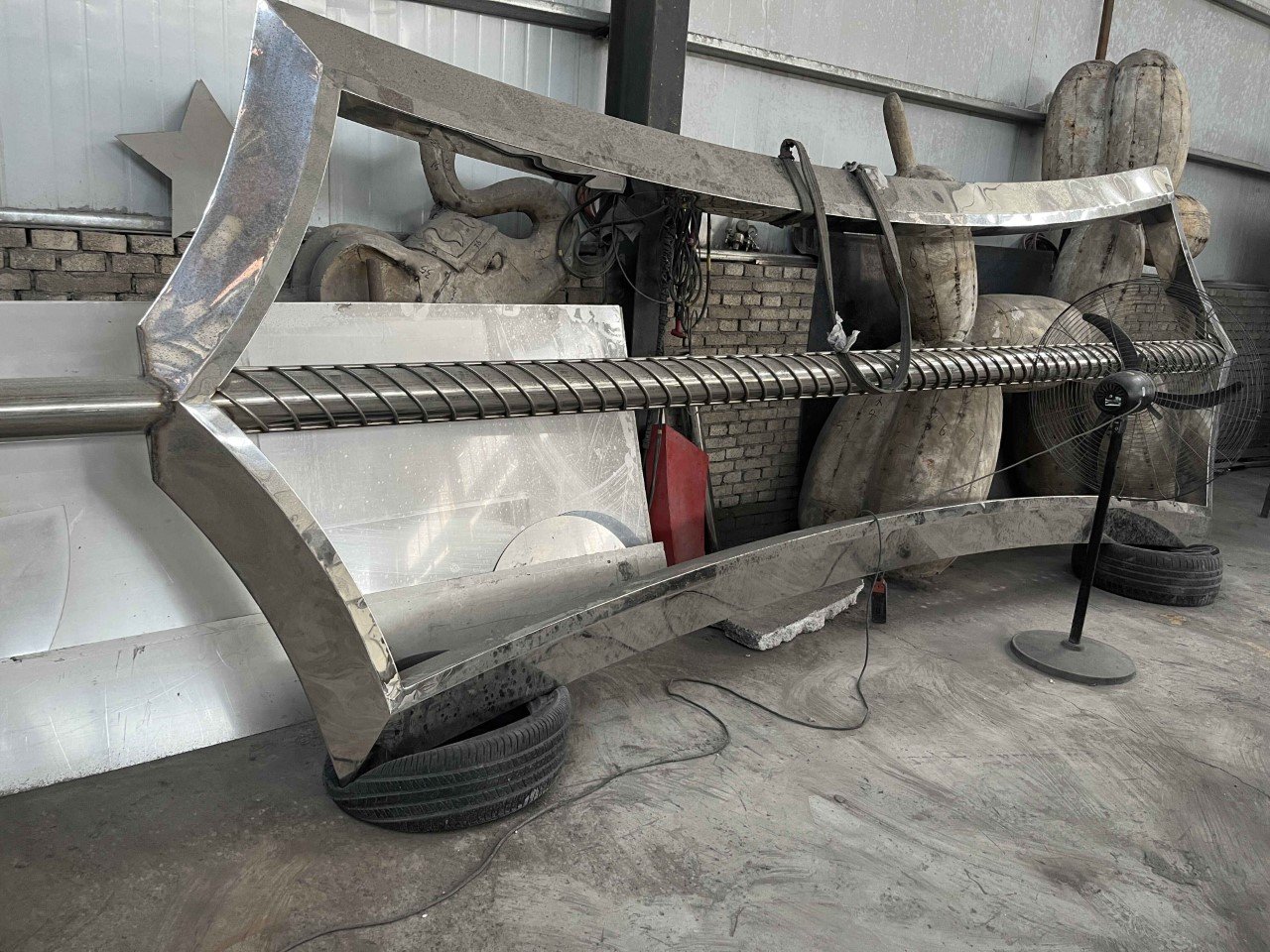

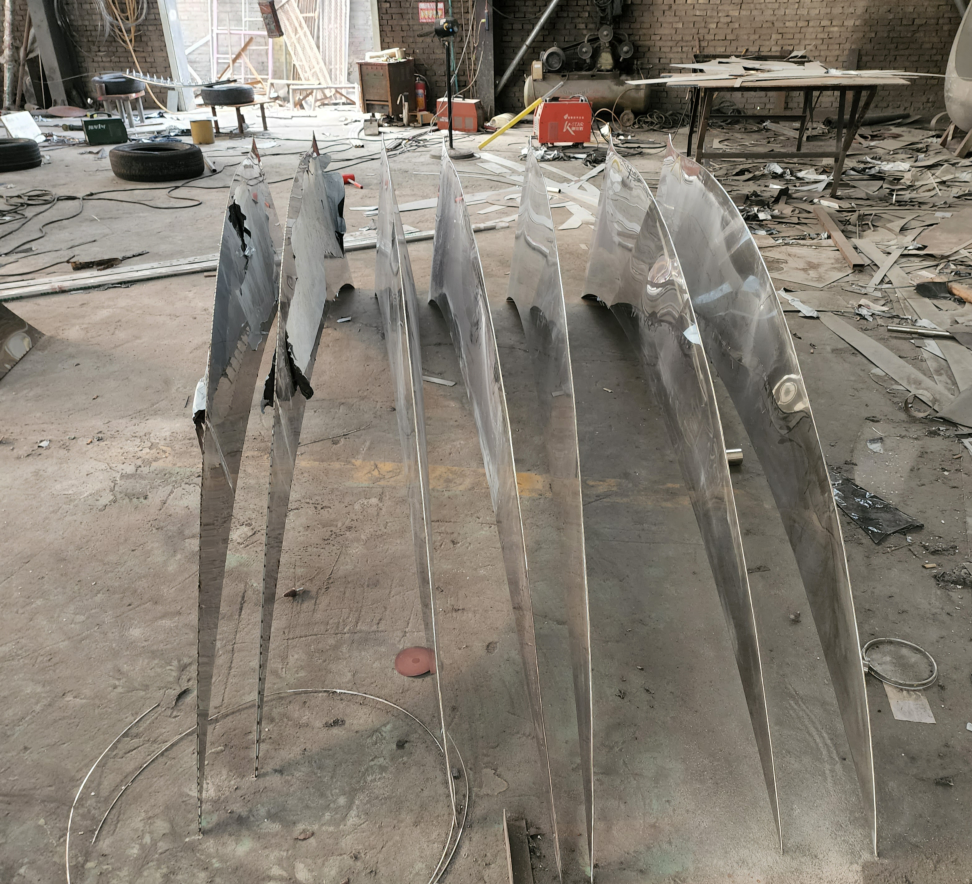
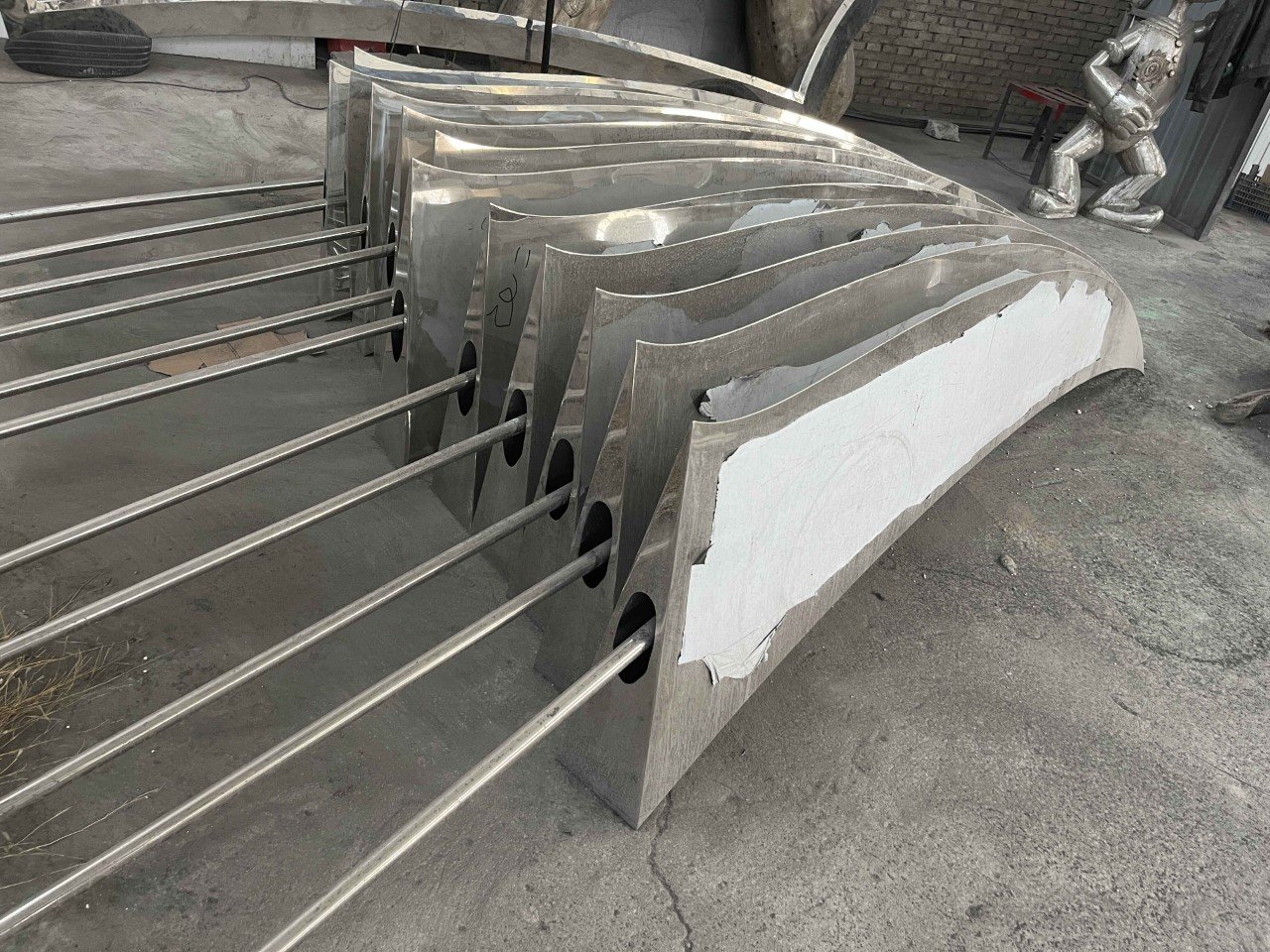
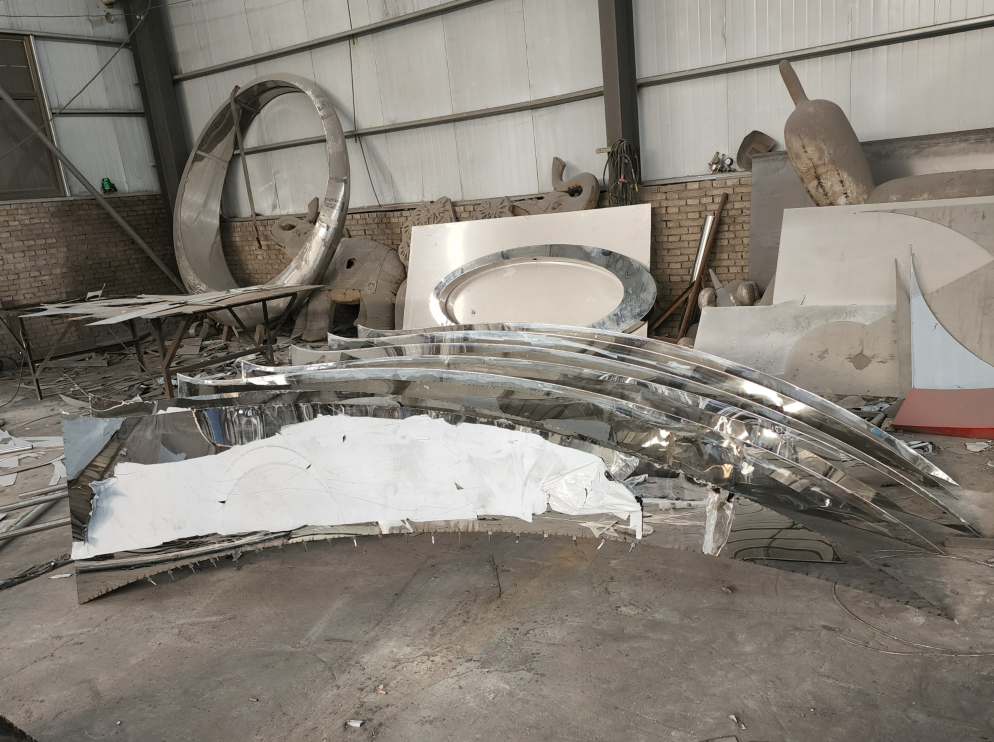
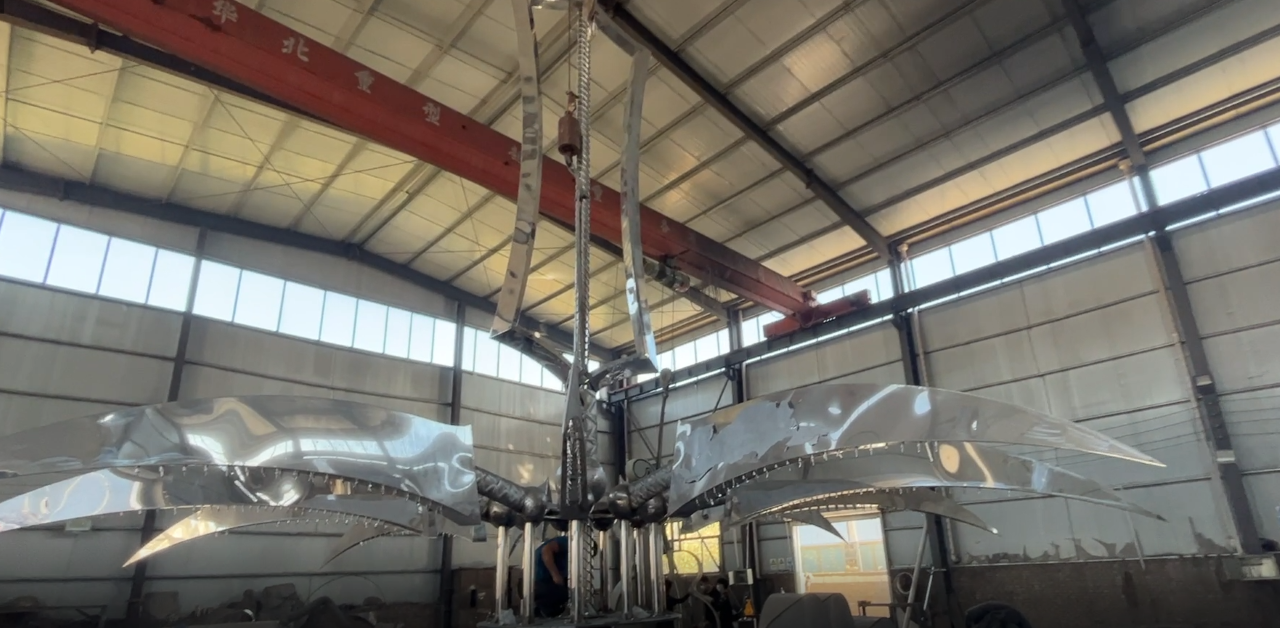

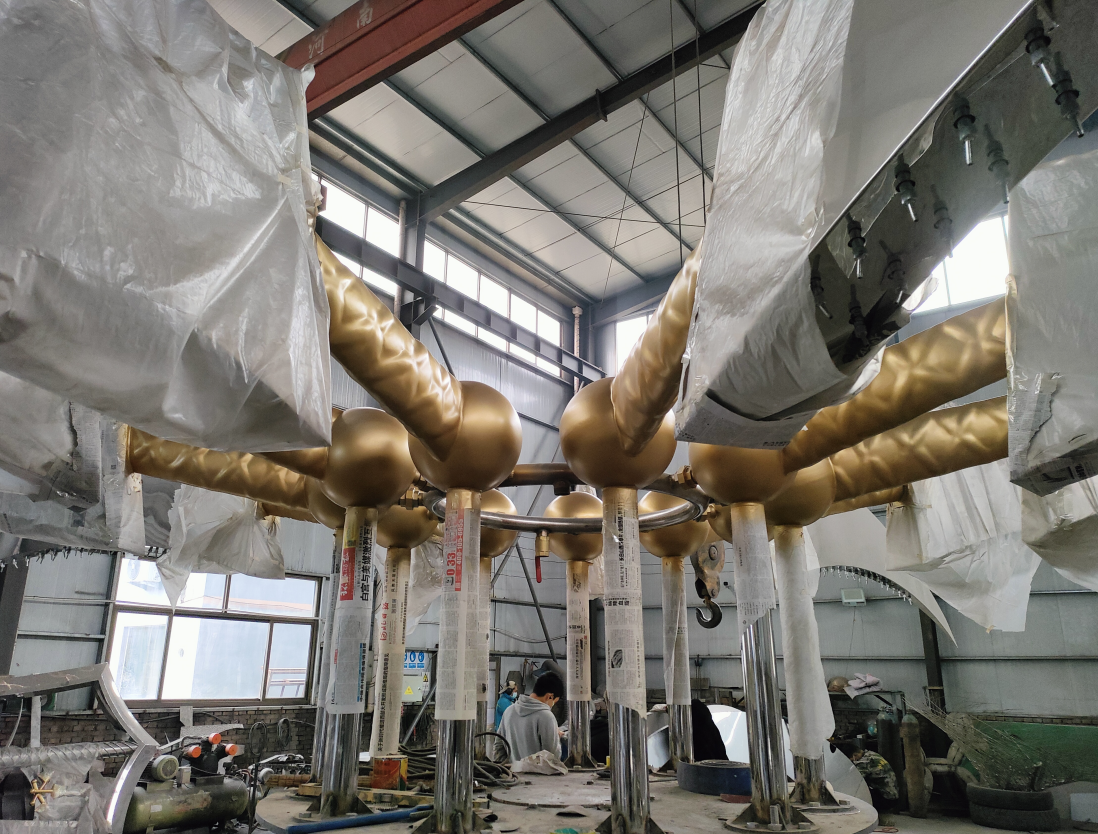



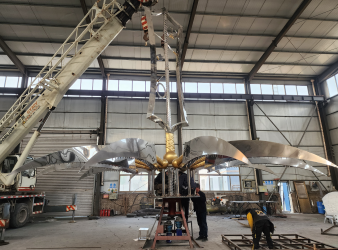

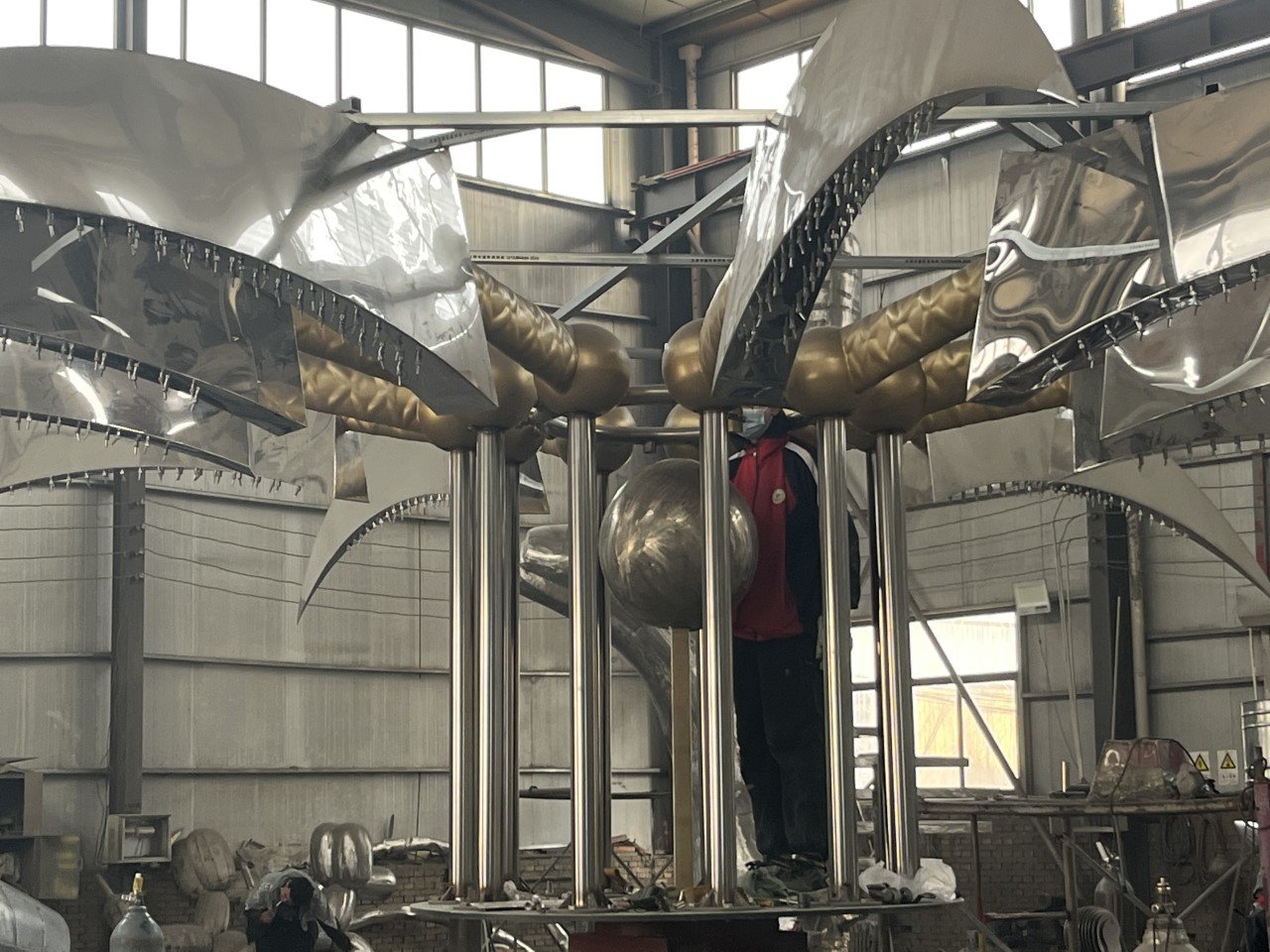
BUDGET: $215,000
Total Estimated Cost: $215,000
Currently raised from generous donors like you: $135,000
Remaining estimated to finish the installation: $80,000
Do you wish to help in bringing the knowledge of Sikhism to the general public? Do you wish to share in remembering the contributions of all the nameless shaheeds (martyrs) from Sikh history? Please contribute, not because you have to, but because you want to.
Please click the button below to go to donations page. (Donations are tax deductible).
NOTE: This art sculpture honors the countless, nameless shaheeds that gave their lives for Sikhi. We respectfully ask the sangat and donors to refrain from asking for anyone’s name being inscribed on this fountain in return for donations. According to the teachings of our Gurus, good deeds should be done from our heart, and not because we seek public acclaim.
SHAHEED FOUNTAIN: Fabrication and testing of elements that will be assembled to create this art sculpture. The final assembly will take place at the Sikh National Center in Houston.
Testing the water feature
Shield that will display information about the fountain. It will be installed next to the fountain base.





